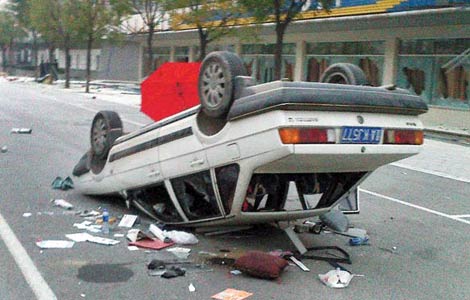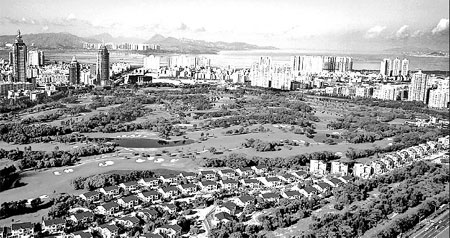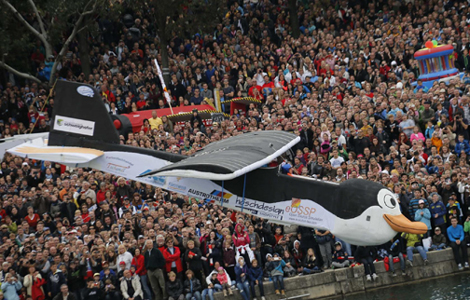'Blessed land' of Shenzhen looks to e-commerce, creativity
Updated: 2012-09-24 08:05
By Zhao Yinan and Chen Hong in Shenzhen (China Daily)
|
|||||||||||
|
The government of Futian, Shenzhen's central business district, is subsidizing and encouraging growth in high-value-added, emerging industries. Provided to China Daily |
After serving as a pilot city for reform and opening up, leading the way in three decades of economic growth in China, Shenzhen has now set its sights on the e-commerce and creative industries for new breakthroughs in its development.
Futian district, the central area of Shenzhen, has mapped out plans to expand its e-commerce, cloud computing and other high-tech industries over the next five years. The blueprint also incorporates development of the creative industry.
With Shenzhen's strategic location in Guangdong province next to the bustling island of Hong Kong, the district government recently said it will help set up an e-commerce platform for international businesses.
Futian, or "blessed land" in Chinese, covers roughly 80 square kilometers and has a population of 1.6 million.
As the downtown area of Shenzhen, the district's a per capita GDP hit $20,000 in 2011, more than three times the national average of $5,414. Per capita disposable income of local residents surpassed 40,000 yuan last year.
Wang Rong, Party chief of Shenzhen, told Xinhua News Agency that the efficient use of land, energy and other resources in Shenzhen is crucial to sustaining development amid rapid urbanization.
Shenzhen's remarkable growth over the past 30 years has brought the city great prosperity, but also challenges in land use, transportation and protecting the environment.
In response, the Futian district government said industrial upgrading is now urgent, so its future development will focus on such high value-added and resource-saving industries as e-commerce and creativity.
Solid basis
Futian has a solid base for developing the emerging industries due to its booming high-tech sectors, especially the electronics industry.
By the end of 2011, the district had 720 high-tech companies that generated combined revenues of 71.4 billion yuan.
Among them, electronics, software and information services are the most important sectors.
Additional evidence of the district's technology strength is the number of patent applications from local enterprises and individuals last year, which increased 39.4 percent from 2010 to 7,356 filings.
Huaqiang North Street has been the core of Shenzhen's electronics industry since 2007, when it started the country's only index measuring the electronics industry. Five years later, it has become the barometer of the industry.
The street is also famous for the Huaqiang Electronic World, one of the nation's major electronics trading markets when it opened in 1998.
Huaqiang Electronic World said it had 6,000 suppliers and made daily deals worth $15 million on average in 2011. It now has branches in Beijing, Shanghai and Hong Kong.
The market's website has become China's largest online trading platform for electronic components, providing millions of information items to offer e-commerce service for suppliers and clients worldwide. It also employs about 450 locals, according to the website.
The Futian district government has also played an important role in boosting the local electronics industry by helping organize exhibitions and trade fairs both in and outside Shenzhen.
A recent example is that more than 100 local manufacturers of LED lighting, digital electronics and mobile phones were organized to take part in a recent exhibition in Chengdu, Sichuan province.
Industrial park
Helping build specialized industrial parks is another effort by the government to boost the development of emerging industries.
The Futian International E-commerce Industrial Park set up in 2009 with government support and favorable policies has since attracted more than 150 Internet and e-commerce companies.
The district government said Futian now has a leading position in the industry with about 409 Internet content providers, accounting for half of Shenzhen's total.
Tencent, China's largest instant messaging service provider with more than 100 million users, was born in Futian district in 1998.
The district government said it hopes to breed more industry leaders in future.
It has set aside a special fund of 100 million yuan a year to subsidize Internet and e-commerce companies from 2011 to 2013, according to the local development guideline released in 2010.
It also said in the guideline that the government will help create a friendly environment and offer a range of favorable policies and support measures for Internet and e-commerce companies.
Creativity industry
Apart from e-commerce, the creative industry is another highlight, as illustrated by 50 million yuan in government subsidies each year.
As a result, dozens of design companies have been set up in Futian in recent years, including the Joint Business Center of International Design Union. Because it was founded by a globally associated design group, the IDU center has gathered renowned design firms and individual designers from all over the world.
Since its founding in 2008, the center has cooperated with more 40 international design firms from 17 countries in businesses covering design consulting, planning, architecture and landscaping.
In addition, a number of animation and filmmaking companies in the district have produced a number of award-winning works.
Revenues from the creativity industry reached 13.5 billion yuan in 2011, an increase of 12.8 percent from 2010. In the first six months this year, the industry generated about 6.8 billion yuan of revenue, up 8.5 percent from a year ago.
Contact the writers at edachen@chinadaily.com.cn
Hot Topics
CPC National Congress, Bogu Kailai, Diaoyu Islands, iPhone, Yao Ming, Sun Yang, Li Na, Liu Xiang, shenzhou, taiwan, hiv, school bus, house, hk, rare earth, food safety
Editor's Picks

|

|

|

|

|

|








